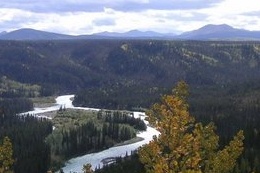When you go out to buy an English dictionary, it is common to see the publisher boasting on the cover that it “includes more than 30,000 words.” In contrast to this, the total number of vocabularies used in the Ahtna language is only a small fraction of this. This makes it difficult to translate the Ahtna to other languages such as English. For example, there are only a few words to describe colors. If you are not good at learning new languages due to the complex nature of most languages, then this might be the right language for you to learn. This is because you have the advantage of having only a few words to master. Even though most of the language has now been documented, it is still relatively lacking in words, compared to more developed languages like English and Chinese.
Ahtna is the ethnic language of the Athna, who live in the Copper Region of Alaska. It is a severely endangered language of native Americans. Out of a total population of 500 people, only a handful of the people speak the language. The youngest speakers are thought to be individuals who are in their thirties. However, many young people are striving to learn the language in an effort to keep it alive. A good example is the Ya Ne Dah Ah School in Alaska that has included Ahtna in its school curriculum. The language has four dialects, all of which are currently being spoken.
The first Ahtna word was written in 1787. This was the word naa-taakie, which translates to snow in English. A few other words were written down by explorers and missionaries over time but the language remained largely undocumented. Since the development of an orthography for Ahtna in 1973, a number of literary and educational materials have been published in the language. This makes Dr. John Smelcer’s book Beautiful Words / Kasuundze’ Kenaege’: The Complete Ahtna Poems a landmark in Ahtana literature. This is considering the brief written literature of the language. Most of the language was passed on to younger generations through oral narrative.
